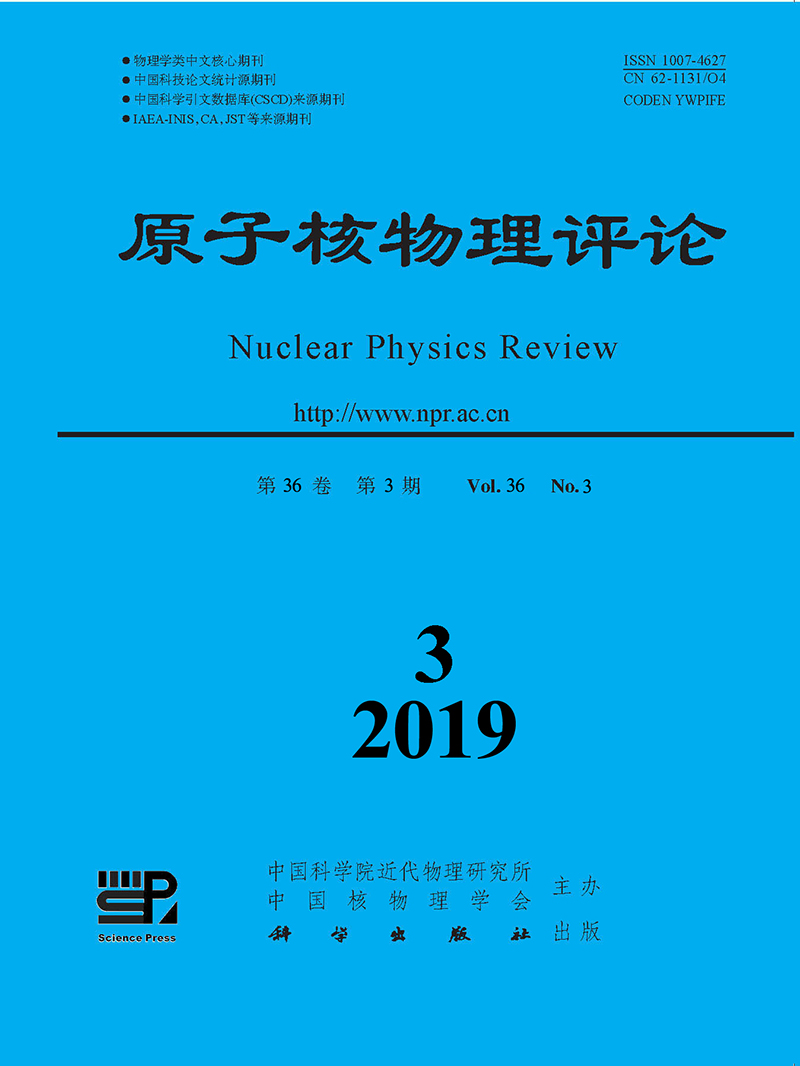|
[1]
|
TANIHATA I, HAMAGAKI H, HASHIMOTO O, et al. Physical Review Letters, 1985, 55(24):1. |
|
[2]
|
XIA J W, ZHAN W L, WEI B W, et al. Nucl Instr and Meth A, 2002, 488(1-2):11. |
|
[3]
|
YU Yuhong. Development of Construction Fast Plastic Scintillator Detector Array for External Target Experiment at CSRm[D]. Beijing:University of Chinese Academy of Sciences, 2009:8. (in Chinese) (余玉洪. CSRm外靶实验装置中快塑料闪烁体阵列型探测器研制[D]. 北京:中国科学院大学, 2009:8) |
|
[4]
|
WU Xingjian, WU Jinhong. International Electronic Elements, 2001, 8:16. (in Chinese) (武兴建, 吴金宏. 国外电子元器件, 2001, 8:16.) |
|
[5]
|
RISIGO F, BULGHERONI A, CACCIA M, et al. Nucl Instr and Meth A, 2009, 607(1):75. |
|
[6]
|
GAO Qi, GAO Hui, XIAO Guoqing, et al. Atomic Energy Science and Technology, 2007, 41(6):746. (in Chinese) (高启, 高辉, 肖国青, 等. 原子能科学技术, 2007, 41(6):746) |
|
[7]
|
LI Chen, ZHAN Wenlong, XIAO Guoqing, et al. Nuclear Techniques, 2005, 28(10):799. (in Chinese) (李琛, 詹文龙, 肖国青, 等. 核技术, 2005, 28(10):799) |
|
[8]
|
GAO Qi, XIAO Guoqing, WANG Jiansong, et al. Atomic Energy Science and Technology, 2009, 43(1):85. (in Chinese) (高启, 肖国青, 王建松, 等. 原子能科学技术, 2009, 43(1):85) |
|
[9]
|
http://kuraraypsf.jp/psf/sf.html. |
|
[10]
|
http://www.sensl.com. |
|
[11]
|
CHI Shaopeng, XIA Xiaomi, ZHOU Li, et al. High Energy Physics and Nuclear Physics. 2003, 27(3):260. (in Chinese) (迟少鹏, 夏小米, 周莉, 等. 高能物理与核物理, 2003, 27(3):260) |
|
[12]
|
SUN Y Z, SUN Z Y, WANG S T, et al. Nucl Instr and Meth A, 2018, 894:73. |
|
[13]
|
ZHOU Jiawen. The Research and Design on the Pre-research readout electronics system of the External experiment in CSR[D]. HeFei:University of Science and Technology of China, 2012:15. (in Chinese) (周家稳. CSR外靶实验读出电子学预研系统研究设计[D]. 合肥:中国科学技术大学, 2012:15) |
|
[14]
|
RUAN Lijuan. Pion, Kaon, Proton and Antiproton Spectra in d+Au and p+p Collisions at √sNN=200 GeV at the Relativistic Heavy Ion Collider[D]. HeFei:University of Science and Technology of China, 2005:38. |
|
[15]
|
KUHLEN M, MOSZYNSKI M, STROYNOWSKI R. Nucl Instr and Meth A. 1991, 301:223. |






 甘公网安备 62010202000723号
甘公网安备 62010202000723号 DownLoad:
DownLoad: